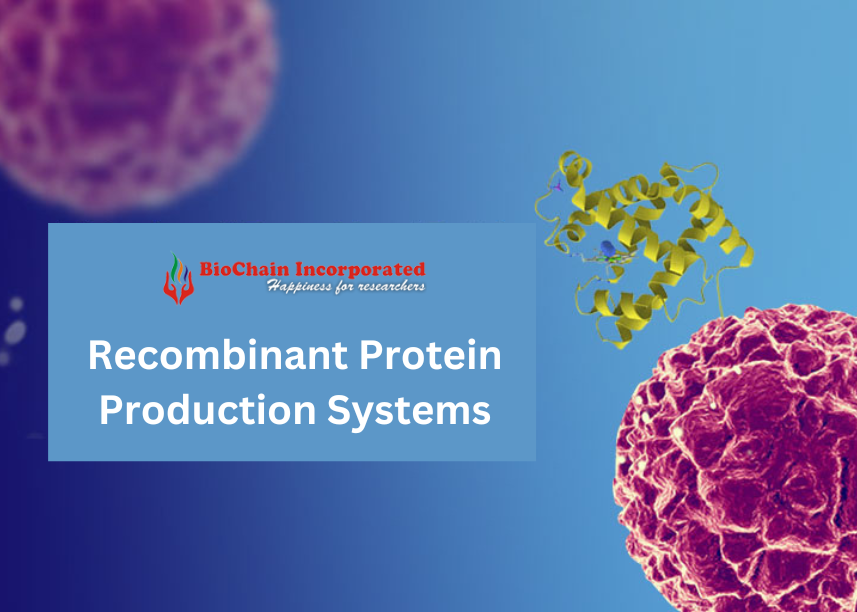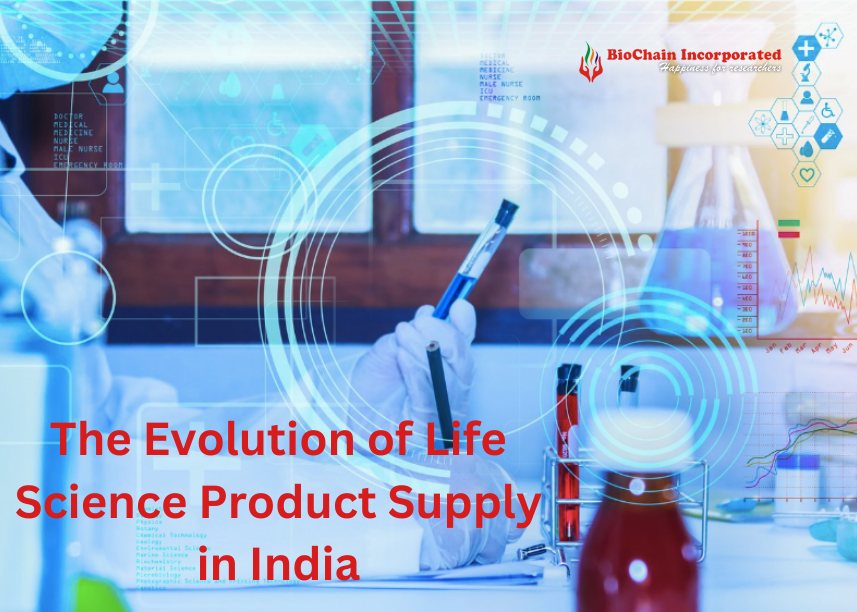Recombinant Protein Production Systems: Yeast, Bacteria, Mammalian Cells, and Insect Cells
Recombinant protein production is a cornerstone of biotechnology that allows the production of large-scale proteins for a variety of applications, including research, industrial enzymes and pharmaceuticals. This process involves inserting the gene that codes for the desired protein into the host cell, which synthesizes the protein. Choosing the right host system is critical to achieving optimal productivity, quality and performance. Biochain is becoming one of the best recombinant protein suppliers in India. Commonly used systems include bacteria, yeast, mammalian cells and insect cells, each with strengths and limitations.
1. Bacterial expression systems
Escherichia coli (E. coli) is the most widely used bacterial host for synthetic protein production. Bacteria have many advantages in terms of simplicity and cost.
Advantages:
- Fast growth: Bacteria grow quickly and produce protein quickly.
- High yield: Bacterial systems can produce large amounts of protein, suitable for use on an industrial scale.
- Cost-effective: Bacterial cultivation is minimal, the process is scalable, suitable for large-scale production.
- Simple genetic manipulation: A well-established technique for gene insertion and manipulation in bacterial systems.
Disadvantages:
- Absence of post-translational modifications (PTM): Bacteria cannot carry out PTMs such as glycosylation or phosphorylation, which are essential for the biological activity of many proteins.
- Protein folding problems: Bacteria often fail to properly fold complex proteins, resulting in inactive proteins or the formation of complex bodies that require recycling.
- Endotoxin contamination: Since E. coli is a gram-negative bacterium and produces endotoxins that must be carefully removed, especially for medical applications.
Uses:
- Industrial enzymes: Bacteria are widely used to produce enzymes such as proteases and lipases.
- Protein research: Bacterial systems are ideal for producing research-class proteins that do not require a CPU.
2. Yeast production systems
Yeast, especially Saccharomyces cerevisiae and Pichia pastoris, are well-known eukaryotic systems for recombinant protein production. Yeast cells strike a balance between the flexibility of bacteria and the ability to process certain CPUs.
Advantages:
- Eukaryotic CPUs: Yeast can perform basic CPUs such as glycosylation, although the patterns are different from those of higher organisms. Higher productivity than mammalian cells: Yeast can produce higher protein than mammalian cells.
- Cost effective: Yeast systems are less expensive than mammalian cell cultures and easier to maintain.
Disadvantages:
- Aberrant glycosylation: Glycosylation patterns in yeast are different from those in humans, affecting the function of therapeutic proteins.
- Hyperglycosylation: Yeast add more sugar residues to proteins than mammalian cells, affecting protein stability and immunogenicity.
Applications:
- Vaccines: Yeast systems have been used to produce recombinant vaccines such as the hepatitis B vaccine.
- Enzyme and protein research: Yeast is also useful for protein production. and research quality protein for industrial applications.
3. Mammalian cell expression systems
Mammalian cells, such as Chinese Hamster Ovary (CHO) cells and HEK293 cells, are the gold standard for producing recombinant complex proteins, especially therapeutic proteins such as monoclonal antibodies.
Advantages:
- Human-like CPUs: Mammalian cells can carry out reliable CPUs such as glycosylation, phosphorylation and proteolytic cleavage, which are essential for the functioning of many proteins.
- Proper protein folding: Mammalian cells have the necessary cellular machinery to properly fold complex proteins and regulate their biological functions.
- Production of therapeutic proteins: Mammalian cells can produce highly functional therapeutic proteins such as hormones and antibodies.
Disadvantages:
- Expensive: Growing mammalian cells is expensive and requires specialized growth media and control environments.
- Slower growth: Mammalian cells grow more slowly than bacteria and yeast and take longer to reproduce.
- Less energy: The protein energy of mammalian cells is less than that of bacteria and yeast.
Applications:
- Biopharmaceuticals: Mammalian cells are the ideal system for the production of monoclonal antibodies, pharmaceuticals and vaccines.
- Complex proteins: Proteins that require large amounts of protein or structural components are best produced in mammalian cells.
4. Insect cell expression system
Insect cells, mainly Spodoptera frugiperda (Sf9) and Sf21 cells, are used in the baculovirus expression system (BEVS) to produce recombinant proteins.
Advantages:
- Eukaryotic CPUs: Insect cells can perform many CPUs similar to mammalian cells, making them a good choice for producing functional proteins.
- High yield of complex proteins: Insect cells can produce large amounts of complex proteins as vaccine-like particles (VLPs).
- Non-pathogenic: Baculoviruses, which are used to infect insect cells to produce proteins, do not infect humans.
Disadvantages:
- Different glycosylation patterns: Although insect cells perform glycosylation, the patterns differ from human cells, which may affect protein production.
- Difficulty of the technology: The production of recombinant proteins in insect cells kills viruses, making the process more complex and time-consuming than in bacterial or yeast systems.
Applications:
- Vaccines: Insect cells are used to produce vaccines, including the human papillomavirus (HPV) vaccine.
- Complex proteins: Proteins that need to be folded with specific proteins, such as viral glycoproteins, are suitable for production in insect cells.
Recombinant protein production systems vary in cost, complexity and ability to produce functional proteins. Bacteria and yeast are very good at producing many simple proteins, while mammalian and insect cells are better at producing complex, functional proteins that require extensive post-translational modifications. translation. The choice of system depends on the specific needs of the protein, its application and post-translational modifications. By understanding the strengths and limitations of each system, researchers can optimize protein production for a wide range of applications, from industrial enzymes to therapeutics. Connect with Biochain, one of the leading recombinant proteins suppliers in India. Contact now.



.png)

.png)


.png)
.png)
.png)
.png)
.png)